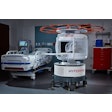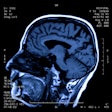Ask J. Thomas Vaughan, PhD, if an MRI magnet can ever have too powerful of a field strength, and the answer is very likely to be "never." The ultrahigh-field MRI pioneer believes 7-tesla MRI could ultimately come into clinical use, and even envisions research MRI being done at 10.5 tesla.
The professor of radiology, electrical engineering, and biomedical engineering at the University of Minnesota's Center for Magnetic Resonance Research (CMRR) likens the development of higher-field MRI technology to a telescope.
"If you have a telescope and you can see the moon, why do you need to see the moon better?" he posed. "Well, some people want to see the craters and some people want to see the stars, so we keep building bigger, more powerful telescopes to see farther, clearer, and in more detail. That certainly applies to the body."
More specifically, researchers at CMRR have been working for more than a decade to develop and perfect 7-tesla and 9.4-tesla MRI technology to image moving hearts and human brains more efficiently. So far, the results have been impressive.
"In cardiac imaging at 7 tesla, we have done high-resolution, free-breathing hearts where you do not have to gate for respiratory motion," Vaughan said. "If you do not have to gate someone's breathing, you have a lot more latitude. Under normal clinical procedures, you can only get as many images as you can under a single breath-hold. If we can eliminate the need for breath-holds altogether, we can make a lot of gains."
With 9.4-tesla MRI scans of animals, CMRR researchers have looked at arteries and veins in cat brains on the order of 10 microns in resolution. "You can't do that at low field strength," he added.
On to 10.5 tesla
Now, researchers at CMRR are making progress on the development of 10.5-tesla MRI technology, with what Vaughan describes as encouraging preliminary results. "Based on our head results from 9.4 tesla and our body results from 7 tesla, we have strong reason to believe the best imaging to come is even higher field strength," he said.
CMRR has two 7-tesla MRI systems; one unit is dedicated for head imaging and the other scanner handles body imaging. The center also houses two 3-tesla scanners, one 4-tesla system, and a 9.4-tesla system, and it will soon have a 10.5-tesla MRI scanner. Since 1999, the CMRR has scanned well over 1,000 people on its 7-tesla systems and several hundred people on its 9.4-tesla unit.
Vaughan himself has been instrumental in developing greater MRI magnet field strengths since 1984, when he worked on 2-tesla MRI technology at the University of Texas Southwestern Medical Center. He later advanced to 4-tesla MRI technology through his work with Philips Healthcare on a scanner that was delivered to the University of Alabama at Birmingham in 1992.
Before he arrived at the University of Minnesota, Vaughan collaborated with CMRR to develop 9.4-tesla magnet strength on a prototype MRI scanner with a 27-cm bore. The magnet was built by Magnex Scientific, which was acquired in 2004 by Varian Inc. Varian provided the console for the MRI scanner, and the radiofrequency (RF) transmitter, receiver, and coils were developed by CMRR researchers.
The 9.4-tesla MRI "was quite notable for more than just field strength," Vaughan said. "It was the first system to demonstrate successful parallel transmission. We actually invented and built a parallel transmitter to drive 16-channel transmit coils."
By 2006, Vaughan and colleagues published a paper in Magnetic Resonance in Medicine titled "9.4T Human MRI: Preliminary Results," which concluded that initial 9.4-tesla studies were feasible and safe for human head imaging at the greater field strength using the system's 65-cm bore (Magn Reson Med, December 2006, Vol. 56:6, pp. 1274-1282).
Commercial viability
As for the commercial viability of greater field strength MRI systems, Vaughan believes it will happen first for 7-tesla technology because the medical imaging industry already has chosen to support this field strength as a research platform.
Still, he added, the move toward 7-tesla MRI will "be quite controversial. Like always, the same people who said 3-tesla will never be commercial are the ones who will tell you that 7-tesla will never be commercial, because it is expensive and technologically intensive."
For now, the benefits of 9.4-tesla MRI will be confined to scientific research, but spin-offs from the technology, such as parallel transmission, have migrated down to the newest generations of 3-tesla MRI systems.
"In terms of physics and measuring basic performance parameters -- signal-to-noise, temporal resolution, spatial and spectral resolution, and various contrast mechanisms -- 7 tesla will be the highest performing system yet," Vaughan said. "So far, it really is meeting all of its promises."
Vaughan and colleagues currently have a paper in press on imaging the heart; it demonstrates a significant improvement in signal-to-noise and spatial resolution with 7-tesla technology, he said. He sees those gains as eventually helping to advance MR spectroscopy.
"We can do a lot more in the direction of looking for metabolic signatures of tumors and increasing specificity to determine if the tumors are malignant or benign or how they are responding to different therapies, such as chemotherapy or radiation," he added. "We also have looked at both the breast and prostate that way."
Future prospects
Still, the future of 7-tesla and 9.4-tesla MRI will have its challenges in the marketplace.
"Probably the single biggest limit on 7-tesla is not technology but economics," Vaughan said. "Technologically, I would say that 7-tesla is proven here and now and ready to go in terms of capability. I think it could be a clinical imager today, but people in the hospital are more practical about keeping their clinic [financially] solvent."
What will drive 7-tesla MRI to the clinic setting, he said, is a "killer application," which will allow physicians to diagnose a condition or disease that they cannot discover with 3-tesla or 1.5-tesla MRI scanners.
"Otherwise, I think it will be a slow and steady but certain path," Vaughan said. "At some point, clinics that can afford [7-tesla MRI] will want better images to make their diagnoses easier and more certain. Physicians will become accustomed to having better quality results."
In the meantime, he believes that 7-tesla MRI will continue to grow as a research tool, with most labs around the world that conduct biomedical research needing at least one 7-tesla scanner.



.fFmgij6Hin.png?auto=compress%2Cformat&fit=crop&h=100&q=70&w=100)
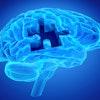
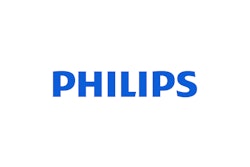
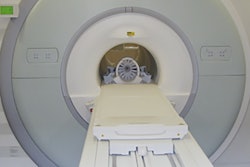
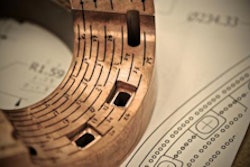
.fFmgij6Hin.png?auto=compress%2Cformat&fit=crop&h=167&q=70&w=250)

